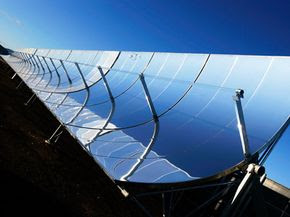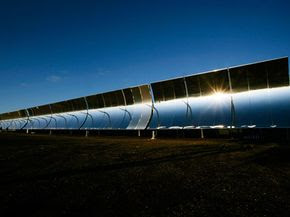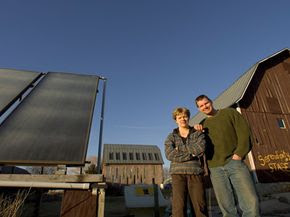
The Sahara is the largest hot desert on earth, pretty much making up the entire top half of Africa. It’s a sunbaked mass of some 3.6 million square miles that are easily identifiable from outer space. It’s a place of few clouds and harsh heat. In fact, where there is water, it evaporates at the quickest rate anywhere on earth. There is sand almost everywhere, and it draws heat immensely. Ground temperatures often surpass 170 degrees F [ 77 degree C ] in the Sahara, warranting special shoes or, better still, a trusty camel.
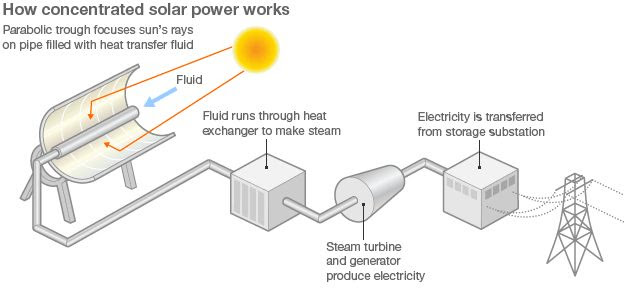
மொராக்கோ நாட்டில் மிகப்பெரும் சூரியக்கதிர் மின்சக்தி நிலையம்
முதன்முதல் மொராக்கோ நாட்டில் மிகப்பெரும் சூரியக்கதிர் மின்சக்தி நிலையம் அமைக்க உலக வங்கி 519 மில்லியன் டாலர் நிதி உதவி அளிக்கும் என்று 2014 அக்டோபர் 3 ஆம் தேதி உறுதி கூறியது. ஆப்பிரிக்க நாடுகளிலே மொராக்கோ போல் சூரிய ஒளி கிடைக்கும் நாடு வேறொன்றில்லை. வருடம் ஒன்றில் சுமார் 3600 மணிநேரம் மொராக்கோ பாலை வனத்தில் சூரிய ஒளி பெற முடிகிறது. ஸஹாரா பாலை வனத்தின் சராசரி சூரிய ஒளி ஆண்டுக்கு 3117 மணிகள். உச்ச உஷ்ணம் ஸஹாராவில் 77 டிகிரி C [170 டிகிரி F ]. மொராக்கோ 9 பில்லியன் டாலர் நிதி ஒதுக்கி, உலகிலே மிகப் பெரும் சூரியக்கதிர் மின்சக்தி நிலையத்தைக் கட்டுமானம் செய்யத் திட்ட மிட்டது. மொராக்கோவின் குறிக்கோள் 2020 ஆண்டுக்குள் 5 சூரியக்கதிர் மின்சக்தி நிலையங்கள் [Photovoltaic, Concentrated Solar Power, Solar Steam turbine types ] கட்டி முடிக்க வேண்டும் என்பதே. அவ்விதம் முடியும் போது சூரியக் கதிர் மின்சக்தியின் பயன்பாடு 38% சதவீதம் இருக்கும்.
மொராக்கோ நாடு ஒன்றுதான் [1400 MW or 2100 MW Capacity Under Sea Cable Link ] ஐரோப்பாவுடன் [ஸ்பெயின்] 9 மைல் (15 km) நீண்ட கடலடி மின்வடத் தொடர்பு வைத்துள்ளது. முதல் சூரியக்கதிர் நிலையம் 2015 இல் இயங்கத் துவங்கியது. 2017 இல் 5750 GWh மின்னாற்றல் ஸ்பெயின் மொராக்கோவுக்கு அனுப்பியது. இப்போது மொராக்கோ ஸ்பெயினுக்கு சூரியக்கதிர் மின்சக்தி அனுப்பும் காலம் வந்துவிட்டது.
திட்டமிட்ட ஐந்து சூரியக்கதிர் மின்சக்தி நிலையங்களுள் முதலாக ஒன்று 500 MW யூனிட் மொராக்கோ தென் பகுதியில் உள்ள ஓரட்ஸாசாட் [Ouratzazate] நகரில் கட்டப்பட உள்ளது. 2013 மே மாதம் 10 இல் கட்டுமானம் ஆரம்பமானது. திட்டம் முக்கட்டப் போக்கில் [160 MW சூரியக்கதிர் குவிப்பு நிலையம், 200 MW விரிவு வட்ட நிலையம் & 150 MW சூரிய அடுப்பு நிலையம்] நிறுவகம் ஆனது. [Noor 1 (160 MW Concentrated Solar Power Plant), Noor 2 (200 MW Parabolic Mirror Plant), Noor 3 (150 MW Solar Trough Plant ]. புது நிலையங்களில் பயன்படும் விரி வளைவுச் சூரிய எதிர் ஒளிக் கண்ணாடித் தட்டுகள் [Solar Parabolic Mirrors] 12 மீடர் [39 அடி] உயரம் உள்ளவை. சூரிய வெப்பத்தை குவித்து உறிஞ்சும் திரவக் குழல்கள் 390 டிகிரி செல்சியஸ் [740 டிகிரி பாரன்ஹீட் ] அளவீட்டில் ஓடுபவை. அந்த நிலையங்கள் நாள் ஒன்றுக்கு 20 மணி நேரம் மின்சக்தி அனுப்புபவை. நூர் 1 [Noor 1] சூரியக்கதிர் நிலையத்தில் 500,000 வளைவுக் கண்ணாடிகள் [Parabolic Mirrors] 800 அணி வகுப்பில் அமைக்கப் பட்டுள்ளன. இந்த மாடல் நிலையம் அமெரிக்கா காலிஃபோர்னியா – நெவேடா, எல்லைப் பக்கம் மொஹாவி பாலை வனத்திலும் உள்ளது. 2.2 பில்லியன் செலவில் 400 MW திறனில் உருவாகும் “இவான்பா” [IVANPAH ] சூரியக்கதிர் மின்சார நிலையம் 5 சதுர மைல் பரப்பில், நாற்பது மூவடுக்குக் கோபுரத்தில் ஆயிரக் கணக்கான சூரியக் கண்ணாடிகளால் இயங்கி வருகிறது. இவான்பா சூரியக் கதிர் நிலயம்140,000 இல்லங்களுக்கு மின்சக்தி பரிமாறும் திறம் உடையது.
How Solar Thermal Power Plant Works
By: Maria Trimarchi
Solar thermal power keeps chugging even when the sun goes down. See more pictures of green living.AP PHOTO/SKYFUEL, JACK DEMPSEY
Most of us don’t think much about where our electricity comes from, only that it’s available and plentiful. Electricity generated by burning fossil fuels such as coal, oil and natural gas, emits carbon dioxide, nitrogen oxides and sulfur oxides — gases scientists believe contribute to climate change. Solar thermal (heat) energy is a carbon-free, renewable alternative to the power we generate with fossil fuels like coal and gas. This isn’t a thing of the future, either. Between 1984 and 1991, the United States built nine such plants in California’s Mojave Desert, and today they continue to provide a combined capacity of 354 megawatts annually, power used in 500,000 Californian homes [source: Hutchinson]. Reliable power, at that. In 2008 when six days of peak demand buckled the power grid and brought electricity outages in California, those solar thermal plants continued to produce at 110 percent capacity [source: Kanellos].
Wondering where the technology’s been since then? In the 1990s when prices of natural gas dropped, so did interest in solar thermal power. Today, though, the technology is poised for a comeback. It’s estimated by the U.S. National Renewable Energy Laboratories that solar thermal power could provide hundreds of gigawatts of electricity, equal to more than 10 percent of demand in the United States [source: LaMonica].
Shake the image of solar panels from your head — that kind of demand is going to require power plants. There are two main ways of generating energy from the sun. Photovoltaic (PV) and concentrating solar thermal (CST), also known as concentrating solar power (CSP) technologies.
PV converts sunlight directly into electricity. These solar cells are usually found powering devices such as watches, sunglasses and backpacks, as well as providing power in remote areas.
Solar thermal technology is large-scale by comparison. One big difference from PV is that solar thermal power plants generate electricity indirectly. Heat from the sun’s rays is collected and used to heat a fluid. The steam produced from the heated fluid powers a generator that produces electricity. It’s similar to the way fossil fuel-burning power plants work except the steam is produced by the collected heat rather than from the combustion of fossil fuels.Contents
Solar Thermal Systems
Parabolic troughs, like these used in Colorado, concentrate the sun’s energy to great temperatures.AP PHOTO/SKYFUEL, JACK DEMPSEY
There are two types of solar thermal systems: passive and active. A passive system requires no equipment, like when heat builds up inside your car when it’s left parked in the sun. An active system requires some way to absorb and collect solar radiation and then store it.
Solar thermal power plants are active systems, and while there are a few types, there are a few basic similarities: Mirrors reflect and concentrate sunlight, and receivers collect that solar energy and convert it into heat energy. A generator can then be used to produce electricity from this heat energy.
The most common type of solar thermal power plants, including those plants in California’s Mojave Desert, use a parabolic trough design to collect the sun’s radiation. These collectors are known as linear concentrator systems, and the largest are able to generate 80 megawatts of electricity [source: U.S. Department of Energy]. They are shaped like a half-pipe you’d see used for snowboarding or skateboarding, and have linear, parabolic-shaped reflectors covered with more than 900,000 mirrors that are north-south aligned and able to pivot to follow the sun as it moves east to west during the day. Because of its shape, this type of plant can reach operating temperatures of about 750 degrees F (400 degrees C), concentrating the sun’s rays at 30 to 100 times their normal intensity onto heat-transfer-fluid or water/steam filled pipes [source: Energy Information Administration]. The hot fluid is used to produce steam, and the steam then spins a turbine that powers a generator to make electricity.
While parabolic trough designs can run at full power as solar energy plants, they’re more often used as a solar and fossil fuel hybrid, adding fossil fuel capability as backup.
Solar power tower systems are another type of solar thermal system. Power towers rely on thousands of heliostats, which are large, flat sun-tracking mirrors, to focus and concentrate the sun’s radiation onto a single tower-mounted receiver. Like parabolic troughs, heat-transfer fluid or water/steam is heated in the receiver (power towers, though, are able to concentrate the sun’s energy as much as 1,500 times), eventually converted to steam and used to produce electricity with a turbine and generator.
Power tower designs are still in development but could one day be realized as grid-connected power plants producing about 200 megawatts of electricity per tower.
A third system is the solar dish/engine. Compared to the parabolic trough and power towers, dish systems are small producers (about 3 to 25 kilowatts). There are two main components: the solar concentrator (the dish) and the power conversion unit (the engine/generator). The dish is pointed at and tracks the sun and collects solar energy; it’s able to concentrate that energy by about 2,000 times. A thermal receiver, a series of tubes filled with a cooling fluid (such as hydrogen or helium), sits between the dish and the engine. It absorbs the concentrated solar energy from the dish, converts it to heat and sends that heat to the engine where it becomes electricity.
Solar Thermal Heat
Solar thermal systems are a promising renewable energy solution — the sun is an abundant resource. Except when it’s nighttime. Or when the sun is blocked by cloud cover. Thermal energy storage (TES) systems are high-pressure liquid storage tanks used along with a solar thermal system to allow plants to bank several hours of potential electricity. Off-peak storage is a critical component to the effectiveness of solar thermal power plants.
Three primary TES technologies have been tested since the 1980s when the first solar thermal power plants were constructed: a two-tank direct system, a two-tank indirect system and a single-tank thermocline system.
In a two-tank direct system, solar thermal energy is stored right in the same heat-transfer fluid that collected it. The fluid is divided into two tanks, one tank storing it at a low temperature and the other at a high temperature. Fluid stored in the low temperature tank runs through the power plant’s solar collector where it’s reheated and sent to the high temperature tank. Fluid stored at a high temperature is sent through a heat exchanger that produces steam, which is then used to produce electricity in the generator. And once it’s been through the heat exchanger, the fluid then returns to the low temperature tank.
A two-tank indirect system functions basically the same as the direct system except it works with different types of heat-transfer fluids, usually those that are expensive or not intended for use as storage fluid. To overcome this, indirect systems pass low temperature fluids through an additional heat exchanger.
Unlike the two-tank systems, the single-tank thermocline system stores thermal energy as a solid, usually silica sand. Inside the single tank, parts of the solid are kept at low to high temperatures, in a temperature gradient, depending on the flow of fluid. For storage purposes, hot heat-transfer fluid flows into the top of the tank and cools as it travels downward, exiting as a low temperature liquid. To generate steam and produce electricity, the process is reversed.
Solar thermal systems that use mineral oil or molten salt as the heat-transfer medium are prime for TES, but unfortunately without further research, systems that run on water/steam aren’t able to store thermal energy. Other advancements in heat-transfer fluids include research into alternative fluids, using phase-change materials and novel thermal storage concepts all in an effort to reduce storage costs and improve performance and efficiency.
Solar Thermal Greenhouses
Lisa Kivirist and John Ivanko stand next to a solar thermal system that heats a greenhouse at their bed-and-breakfast.AP PHOTO/ANDY MANIS
The idea of using thermal mass materials — materials that have the capacity to store heat — to store solar energy is applicable to more than just large-scale solar thermal power plants and storage facilities. The idea can work in something as commonplace as a greenhouse.
All greenhouses trap solar energy during the day, usually with the benefit of south-facing placement and a sloping roof to maximize sun exposure. But once the sun goes down, what’s a grower to do? Solar thermal greenhouses are able to retain that thermal heat and use it to warm the greenhouse at night.
Stones, cement and water or water-filled barrels can all be used as simple, passive thermal mass materials (heat sinks), capturing the sun’s heat during the day and radiating it back at night.
Bigger aspirations? Apply the same ideas used in solar thermal power plants (although on a much smaller level) and you’re on your way to year-round growing. Solar thermal greenhouses, also called active solar greenhouses, require the same basics as any other solar thermal system: a solar collector, a water storage tank, tubing or piping (buried in the floor), a pump to move the heat-transfer medium (air or water) in the solar collector to storage and electricity (or another power source) to power the pump.
In one scenario, air that collects in the peak of the greenhouse roof is drawn down through pipes and under the floor. During the day, this air is hot and warms the ground. At night, cool air is drawn down into the pipes. The warm ground heats the cool air, which in turn heats the greenhouse. Alternatively, water is sometimes used as the heat-transfer medium. Water is collected and solar heated in an external storage tank and then pumped through the pipes to warm the greenhouse.
Solar Thermal Chimneys
Solar thermal power has great potential because the technology is already all there.GUANG NIU/GETTY IMAGES
Just as solar thermal greenhouses are a way to apply solar thermal technologies to an everyday need, solar thermal chimneys, or thermal chimneys, also capitalize on thermal mass materials. Thermal chimneys are passive solar ventilation systems, which means they are nonmechanical. Examples of mechanical ventilation include whole-house ventilation that uses fans and ducts to exhaust stale air and supply fresh air. Through convective cooling principles, thermal chimneys allow cool air in while pushing hot air from the inside out. Designed based on the fact that hot air rises, they reduce unwanted heat during the day and exchange interior (warm) air for exterior (cool) air.
Thermal chimneys are typically made of a black, hollow thermal mass with an opening at the top for hot air to exhaust. Inlet openings are smaller than exhaust outlets and are placed at low to medium height in a room. When hot air rises, it escapes through the exterior exhaust outlet, either to the outside or into an open stairwell or atria. As this happens, an updraft pulls cool air in through the inlets.
In the face of global warming, rising fuel costs and an ever-growing demand for energy, energy needs are expected to increase by nearly the equivalent of 335 million barrels of oil per day, mostly for electricity [source: Meisen]. Whether big or small, on or off the grid, one of the great things about solar thermal power is that it exists right now, no waiting. By concentrating solar energy with reflective materials and converting it into electricity, modern solar thermal power plants, if adopted today as an indispensable part of energy generation, may be capable of sourcing electricity to more than 100 million people in the next 20 years [source: Brakmann]. All from one big renewable resource: the sun.
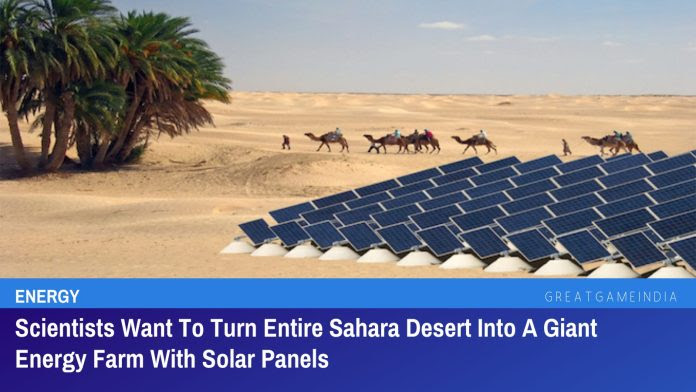
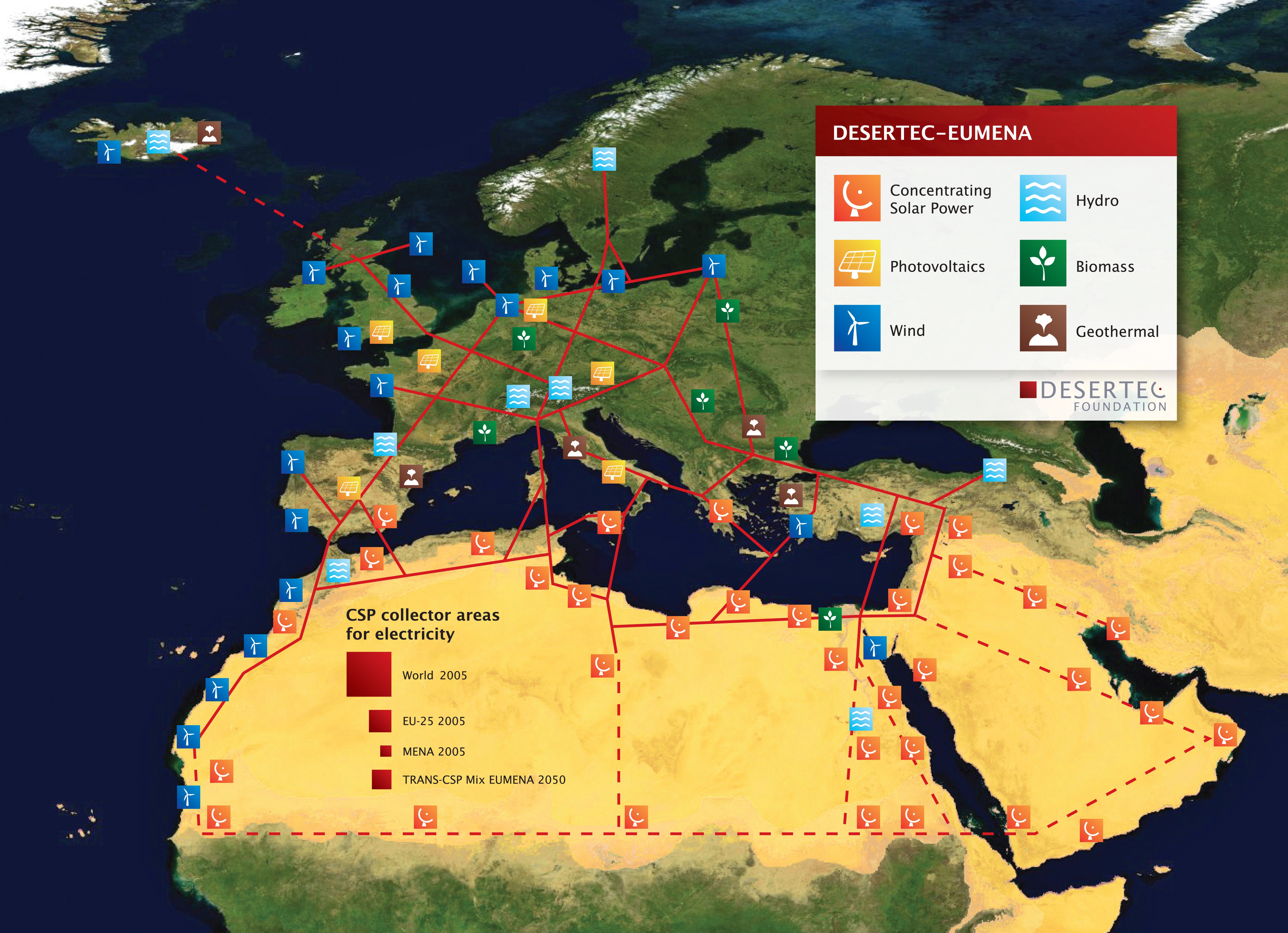
Morocco Renewable Energy solar projects to be installed between now and 2030
| NAME | OUTPUT (MW) | LOCATION | TECHNOLOGY | STATUS | NOTES |
|---|---|---|---|---|---|
| Ain Beni Mathar | 20[12] | Ain Bni Mathar | Parabolic trough | complete | Also runs on fossil fuels (Gas) |
| Noor I | 160 | Drâa-Tafilalet | Parabolic trough | complete | Part of Ouarzazate Solar Power Station |
| Noor II | 200 | Drâa-Tafilalet | Parabolic trough | complete | Part of Ouarzazate Solar Power Station |
| Noor III | 150 | Drâa-Tafilalet | solar power tower | complete | Part of Ouarzazate Solar Power Station |
| Noor IV | 72 | Drâa-Tafilalet | Photovoltaics with tracking | complete | Part of Ouarzazate Solar Power Station |
PLANNED[EDIT]
| NAME | OUTPUT | LOCATION | TECHNOLOGY | STATUS | NOTES |
|---|---|---|---|---|---|
| Sebkhate Tah | 500MW | ||||
| Foum Al-Oued | 500MW | ||||
| Boujdour | 100 MW | Planned | |||
| Noor Midelt | 800 MW | ||||
| Noor PV II | 800MW | Taroudant, Kalâat Seraghna, Bejaâd, Guercif, El Hajeb | |||
| Noor-Tafilalet | 120 MW | Zagora, Erfoud and Missour | Planned | ||
| Noor Atlas | 800MW | Tata/Tahla/Tan Tan/Outat El Haj/Ain Beni Mathar/Boudnib/Bouanane/ |
Photovoltaics | ||
| Noor Argana | 200 MW | Boumalne/Tinghir/Errhamna/ |
Photovoltaics |
See also[edit]
Largest solar power plants[edit]
Morocco Renewable Energy solar projects to be installed between now and 2030
| NAME | OUTPUT (MW) | LOCATION | TECHNOLOGY | STATUS | NOTES |
|---|---|---|---|---|---|
| Ain Beni Mathar | 20[12] | Ain Bni Mathar | Parabolic trough | complete | Also runs on fossil fuels (Gas) |
| Noor I | 160 | Drâa-Tafilalet | Parabolic trough | complete | Part of Ouarzazate Solar Power Station |
| Noor II | 200 | Drâa-Tafilalet | Parabolic trough | complete | Part of Ouarzazate Solar Power Station |
| Noor III | 150 | Drâa-Tafilalet | solar power tower | complete | Part of Ouarzazate Solar Power Station |
| Noor IV | 72 | Drâa-Tafilalet | Photovoltaics with tracking | complete | Part of Ouarzazate Solar Power Station |
PLANNED[EDIT]
| NAME | OUTPUT | LOCATION | TECHNOLOGY | STATUS | NOTES |
|---|---|---|---|---|---|
| Sebkhate Tah | 500MW | ||||
| Foum Al-Oued | 500MW | ||||
| Boujdour | 100 MW | Planned | |||
| Noor Midelt | 800 MW | ||||
| Noor PV II | 800MW | Taroudant, Kalâat Seraghna, Bejaâd, Guercif, El Hajeb | |||
| Noor-Tafilalet | 120 MW | Zagora, Erfoud and Missour | Planned | ||
| Noor Atlas | 800MW | Tata/Tahla/Tan Tan/Outat El Haj/Ain Beni Mathar/Boudnib/Bouanane/ |
Photovoltaics | ||
| Noor Argana | 200 MW | Boumalne/Tinghir/Errhamna/ |
Photovoltaics |
- Energy policy of Morocco
- Renewable energy in Morocco
- Wind power in Morocco
- Renewable energy by country



Reference
- https://www.npr.org/sections/
thetwo-way/2016/02/04/ 465568055/morocco-unveils-a- massive-solar-power-plant-in- the-sahara - https://www.npr.org/sections/
thetwo-way/2014/02/14/ 276857591/shine-on-world-s- largest-solar-plant-opens-in- nevada - https://ideas.ted.com/solar-
farm-sahara-desert-climate- impact-effects/
S. Jayabarathan [jayabarathan.wordpress.com/] [December 8, 2021]
- அவரவர் முதுகு
- மகத்தான மாண்டிசோரி கல்விமுறை
- ஒருமையைத் தேடி சூஃபி பார்வையின் வழியே பகவத் கீதையும்-குரானும் மூஸா ராஜாவின் IN SEARCH OF ONENESS என்ற நூலின் தமிழாக்கம்
- சப்தஜாலம்
- தந்தையின் இருத்தலும் மகளின் கட்டுடைப்பும் ‘பெத்தவன்’ நெடுங் கதையை முன்வைத்து.
- ‘இவன் வேற மாதிரி அல்ல.’ – புத்தகத்தைத் தெரிந்து கொள்வோம்
- எங்க வானத்தில் மீண்டும் ஒரு வால்நட்சத்திரம்
- அழகிய சிங்கர் 3 கவிதைகள்
- ஸஹாரா பாலைவனச் சூரியக்கதிர் நிலையங்கள் ஐரோப்பிய நாடுகளுக்கு தொடர்ந்து மீள்புதிப்பு மின்சக்தி பரிமாறத் திட்டம்.
- மெல்பனில் மல்லிகை ஜீவா நினைவரங்கில் முருகபூபதியின் மூன்று நூல்களின் வெளியீடு
- பெரியப்பாவின் உயில்
- பாரதி தரிசனம் பிறமொழிகளில் பாரதியை அறிமுகப்படுத்துவதில் எதிர்நோக்கப்படும் சவால்கள் !
- தொடுவானுக்கு அப்பால்
- எனது ஆகாயம்
- இலக்கியப்பூக்கள் 224
- எழுத்தாளர் குரு அரவிந்தனிடமிருந்து “சிறுகதை எழுதுவது எப்படி?” பயிற்சிப்பட்டறை.
- ஏக்கங்கள்


